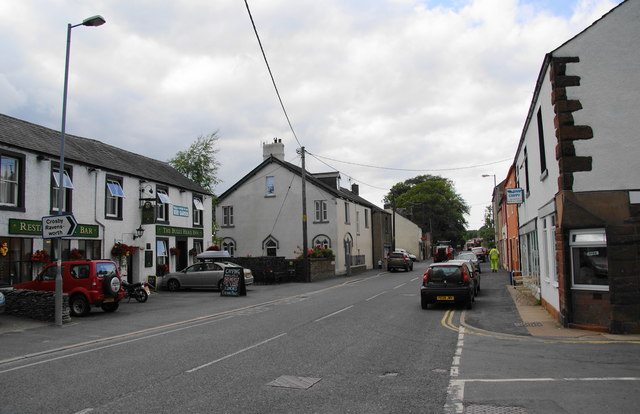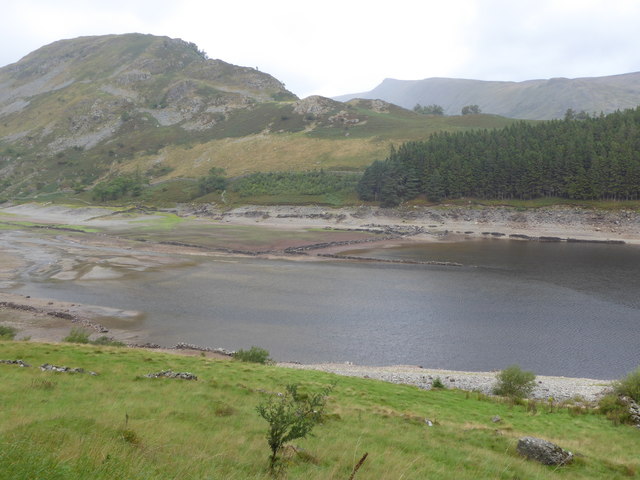Topics > Civil Parishes in Cumbria > Shap Civil Parish > Shap Parish, 1848
Shap Parish, 1848
SHAP (St. Michael), a small town and a parish, in West ward and union, county of Westmorland, 6 miles (N.W.) from Orton; containing, with the chapelry of Swindale, and part of Mardale, 996 inhabitants. It comprises about 51,000 acres. The soil is various, a considerable portion of it peat-moss; the surface is hilly, and the river Lowther flows through the parish, while the beautiful lake Hawswater bounds it on the west. The substratum contains abundance of limestone, much blue slate, and a remarkably fine range of red granite; the surrounding country is highly interesting to the geologist. Shap is resorted to for the efficacy of its mineral spring, which closely resembles that of Harrogate: the well or spa is about three miles from the town, on the bank of a rivulet separating the parish from that of Crosby-Ravensworth. For the accommodation of the increased number of visiters, the late Earl of Lonsdale erected a handsome hotel, the grounds of which are enriched with thriving plantations. The town consists chiefly of one long street, on the road between Penrith and Kendal. Here is the highest point on the line of the Lancaster and Carlisle railway. The gradients on this part of the undertaking are 1 in 75: the cutting at the top of the rise is 900 feet above the level of the sea, and more than half a mile long, ranging from 50 to 61 feet in depth. Engines are constantly kept here, to assist carriages up the incline. In 1687, a charter was obtained for a market on Wednesday, and three fairs on April 23rd, August 1st. and September 17th, each for two days; but they have been long in disuse, and at present only a small market is held on Monday, and a fair for cattle and pedlery on May 4th. The living is a discharged vicarage, valued in the king's books at £8. 15. 7½.; net income, £73; patron and impropriator, the Earl of Lonsdale: the tithes were commuted for land and a money payment in 1767. A gallery has been erected in the church, and 110 additional free sittings provided. At Swindale and Mardale are separate incumbencies. Thomas Jackson, in 1703, gave a messuage and some land for the erection and support of a school; the income is £25. The late Earl of Lonsdale erected a handsome school, which he endowed. About one mile west from the town are the venerable ruins and tolerably perfect tower of Shap Abbey, founded about 1150: at the Dissolution the revenue was estimated at £166.10. 6. At Hardendale, in the parish, Dr. John Mill, the learned editor of the Greek Testament, was born in 1645.
Extract from: A Topographical Dictionary of England comprising the several counties, cities, boroughs, corporate and market towns, parishes, and townships..... 7th Edition, by Samuel Lewis, London, 1848.

Co-Curate Page
Shap
- Overview About Shap Map Street View Shap is a linear village and civil parish located among fells and isolated dales in Eden district, Cumbria, England. The village lies along …

Co-Curate Page
Shap Rural Civil Parish
- Parish boundaries may have changed - for the latest map see the Parish Council or Westmorland & Furness Council. About the Parish Overview: Shap Rural is a sparsely populated civil …

Co-Curate Page
Mardale Green
- Overview About Mardale Mardale Green was a village in Westmoreland (now part of Cumbria) which was flooded in c.1935, following the construction of the dam built to fill Haweswater Reservoir. An …


Co-Curate Page
Shap
- Overview About Shap Map Street View Shap is a linear village and civil parish located among fells and isolated dales in Eden district, Cumbria, England. The village lies along …

Co-Curate Page
Shap Rural Civil Parish
- Parish boundaries may have changed - for the latest map see the Parish Council or Westmorland & Furness Council. About the Parish Overview: Shap Rural is a sparsely populated civil …







